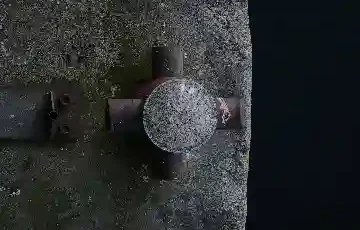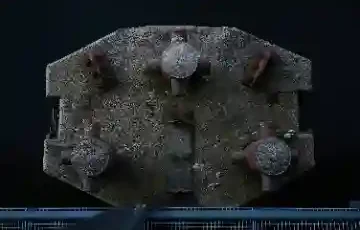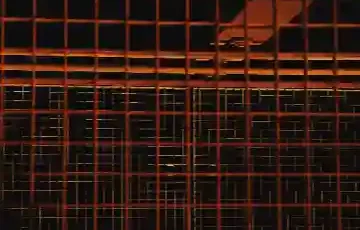Buying a yacht under Dutch law requires verification of ownership documents, VAT proof, and CE marking, followed by a written purchase agreement specifying price, delivery, and warranties. When uncertain about the vessel’s condition, commission a pre-purchase survey before finalising the acquisition. Our yachting lawyers in the Netherlands shall explain the most important aspects.
Buying a Yacht Under Dutch Law represents a significant investment demanding careful preparation. Beyond financial considerations, legal obligations and documentation play a crucial role. In the Netherlands, Book 7 of the Dutch Civil Code governs the sale of vessels, establishing specific rights and obligations for both buyer and seller. Therefore, verifying all relevant documents and recording agreements in writing proves essential before completing the purchase.
What Documents Do You Need When Purchasing a Yacht Under Dutch Law?
When Buying a Yacht Under Dutch Law, you need at minimum VAT proof, a purchase agreement, potentially a registration certificate, and for boats between 2.5 and 24 meters hull length, CE marking with accompanying declaration of conformity.
Required documents depend on yacht type and intended use. For vessels with hull length between 2.5 and 24 meters, CE marking became mandatory in June 1998. This marking must remain visible from the helm station, demonstrating compliance with European safety standards. The CE marking comprises four essential elements:
- A plate near the helm displaying waterway category (A, B, C, or D), maximum crew capacity, and permitted additional weight
- A WIN number on the starboard side near the transom’s aft section
- An owner’s manual containing technical specifications
- A Declaration of Conformity signed by the shipyard
VAT proof constitutes the most critical document for any yacht purchase in the Netherlands. This proof demonstrates VAT payment within the European Union. Without valid VAT documentation, you risk additional assessment up to 21% of the purchase value. Customs authorities regularly conduct spot checks verifying vessels possess correct VAT documentation. Consequently, maintain this proof permanently with your yacht’s administrative records.
Additionally, verify the CIN code, the vessel’s unique identification number. This code indicates construction year and the boat’s origin. With this information, you confirm whether seller details match the yacht’s actual specifications. Missing CIN codes potentially indicate illegal construction methods or unclear provenance.
Must You Register Your Yacht With the Ship Register in the Netherlands?
The Netherlands imposes no general registration requirement for recreational vessels. However, for voyages beyond Dutch waters, registration with the Ship Registry (the Ship Register of the Dutch Cadastre) as a seagoing vessel proves advisable. This registration costs approximately €100 and provides legal protection for your ownership rights. Moreover, registration as a seagoing vessel provides a certificate of registry, significantly simplifying customs procedures abroad.
When Buying a Yacht Under Dutch Law that is already registered, you need not register the boat again. You arrange ownership transfer through a notary who processes the change in the Ship Registry. Important: legal ownership remains with the registered owner until you complete the transfer registration. Should you prefer not continuing registration, you deregister the vessel at the Ship Registry.
For fast motorboats, the registration certificate does not constitute proof of legal ownership. Furthermore, many countries value this document minimally. The International Certificate for Pleasure Craft (ICP) likewise offers incomplete legal certainty. Therefore, opt for complete Ship Registry registration when regularly navigating international waters.
How Do You Verify the Seller’s Reliability in Dutch Law?
Verify a yacht seller’s reliability by examining operational duration, number of yachts sold, industry association recognition, and previous buyer reviews describing their experiences with the seller.
A trustworthy yacht broker maintains membership with HISWA (Dutch Water Sports Association) or holds EMCI certification (European Marine Certified Intermediary). These quality marks guarantee adherence to professional codes of conduct and provide additional buyer protection. Brokers with these certifications employ standard purchase agreements safeguarding your rights.
For private sales without broker involvement, you personally verify whether the seller genuinely owns the vessel. Therefore, request invoices, receipts, and maintenance records bearing the current owner’s name. These documents demonstrate the seller possesses authority to sell the yacht. Additionally, confirm whether the seller appears as registered owner in the Ship Registry, when the vessel carries registration.
What Occurs During a Pre-Purchase Survey According to Dutch Standards?
A pre-purchase survey by an independent expert provides insight into the yacht’s actual condition. Approximately 75% of buyers commission surveys before proceeding with final purchase. The surveyor inspects hull, deck, engine, electrical installation, and standing and running rigging. Furthermore, he verifies presence of all mandatory vessel documents.
Pre-purchase survey costs range between €500 and €1,500, depending on vessel size and complexity. However, this investment frequently prevents substantially higher repair costs afterward. The survey report details identified defects and estimates repair expenses. Armed with this information, you negotiate price adjustments or request the seller remedy defects before delivery.
Submit your offer subject to survey. This clause protects you when the survey reveals serious defects. Subsequently, you commission the boat survey and determine based on the report whether to proceed with purchase. A seller refusing survey permission raises legitimate doubts regarding his yacht’s condition.
Which Provisions Should You Include in the Purchase Agreement Under Dutch Law?
It’s highly advisable, when buying a Yacht Under Dutch Law, this is written down in a commercial agreement. A yacht purchase agreement must minimally contain purchase price, delivery date, inventory, warranty provisions, and agreements regarding defect repairs, plus a declaration concerning VAT payment and absence of third-party claims.
Always establish a written purchase agreement, for instance following the ANWB model for private sales. This agreement protects both parties and prevents misunderstandings about rights and obligations. Without written agreement, you risk yacht disputes in the Netherlands over oral arrangements proving difficult to substantiate.
The purchase agreement specifies these essential elements:
- Complete identification of the yacht with CIN code, construction year, brand, and type
- Purchase price including any additional equipment and inventory
- Delivery date and location where transfer occurs
- VAT status with declaration that VAT has been paid and proof will be provided
- Declaration that the yacht remains free from attachments, mortgages, and other third-party claims
- Warranty provisions concerning known and hidden defects
- Agreements regarding repair of identified defects from the survey
When purchasing a yacht through a broker, this professional arranges the purchase agreement. Brokers charge commission between 5% and 10% of the sale price, typically paid by the seller. However, these costs often factor into the asking price.
When Should You Apply for Insurance in the Netherlands?
You apply for insurance once the yacht legally becomes your property. Most insurers offer provisional coverage based on the vessel’s estimated value. After policy issuance, the insurer surveys the yacht to establish definitive premium and coverage. This assessment typically requires one to two weeks.
Between concluding the purchase agreement and actual delivery, the yacht potentially remains uninsured. Therefore, specify in the purchase agreement who bears responsibility for damage during this period. Often the seller maintains insurance until delivery moment, though this requires explicit arrangements.
How Do You Determine a Fair Purchase Price Under Dutch Market Conditions?
Determine a fair purchase price by analyzing comparable yachts across multiple sales platforms while considering construction year, equipment, maintenance condition, and potential repair costs from the survey report.
Compare at minimum five to ten similar yachts on websites including Botentekoop.nl, YachtWorld, and Boats.com. Pay specific attention to construction year, engine hours, recent maintenance work, and present equipment. A yacht with complete navigation electronics, recently replaced sails, and a well-maintained engine justifies higher pricing than a comparable model lacking these upgrades.
The surveyor often indicates whether the asking price proves realistic relative to the yacht’s condition. On average, survey reports lead to price corrections between €2,000 and €10,000, depending on identified defects. Use this information to submit a well-founded counteroffer.
Consider market conditions. In spring, prices average 10% to 15% higher than in autumn, when owners seek quick sales before winter storage. Regional differences also matter: yachts in North Holland and South Holland typically cost 5% to 10% more than in other provinces due to higher demand.
Which Maintenance Records Should You Request in Dutch Transactions?
Always request complete maintenance history from the seller. Comprehensive maintenance records demonstrate the owner maintained his yacht carefully. Particularly documentation concerning engine maintenance, replaced sails, hull repairs, and electrical installation work proves valuable.
Service certificates from specialized companies provide additional certainty regarding completed work. Invoices from the past three to five years offer insight into total maintenance costs. This information helps you estimate expenses you might anticipate in coming years.
Missing maintenance records potentially indicate neglect. A yacht lacking documentation requires extra attention during survey. Request the surveyor specifically check for signs of deferred maintenance, such as corrosion, standing rigging wear, and engine condition.
Do You Need a Boating License for Your Yacht in the Netherlands?
For sailing yachts without motor or with auxiliary motor traveling maximum 20 kilometers per hour, you need no boating license. However, a license becomes mandatory for motorboats exceeding 15 meters and for all boats traveling faster than 20 kilometers per hour. You obtain the license by passing examination at the CBR after completing a course or self-study.
In certain European countries, boating license requirements apply to every boat type, regardless of length or speed. When navigating your yacht to Belgium, Germany, or France, verify local regulations beforehand. The ICC (International Certificate of Competence) receives recognition in most European countries and simplifies cross-border navigation.
What Are the Costs When Purchasing a Yacht Under Dutch Law?
Beyond purchase price, various costs accompany yacht acquisition. Calculate these amounts:
- Pre-purchase survey: €500 to €1,500 depending on size and type
- Notary costs for ownership transfer: €150 to €400
- Ship Registry registration: approximately €100 for seagoing vessel registration
- Insurance: annually 1% to 2% of value for hull and liability coverage
- Berth costs: €100 to €300 per meter length annually
- Winter storage: €50 to €150 per meter length
Remember costs for potential repairs emerging from the survey. On average, buyers invest €5,000 to €15,000 in initial improvements and equipment after purchasing a used yacht.
How Does Final Yacht Delivery Proceed in Dutch Transactions?
On the agreed delivery date, you recheck whether all agreed items and equipment are present. Create a detailed inventory list and photograph the yacht’s condition. This documentation protects you should disputes arise later concerning delivered condition.
The seller provides all documents: VAT proof, CE marking with declaration of conformity, maintenance logbooks, equipment warranty certificates, and potentially the registration certificate. Verify all keys are present, including those for lockers, hatches, and the engine. Test whether the engine starts and all electrical systems function properly.
After document transfer and purchase price payment, both parties sign a delivery protocol. This protocol confirms delivery occurred according to the purchase agreement. From that moment, you become owner and bear complete responsibility for the yacht.
Do you want certainty regarding legal aspects of your yacht purchase? A specialized maritime lawyer in Amsterdam analyzes purchase agreements, verifies all documents, and guides you throughout the entire acquisition process. This prevents costly legal yacht problems afterward.
What Should You Do About Hidden Defects After Purchase Under Dutch Law?
Dutch law protects buyers against hidden defects according to Article 7:17 of the Dutch Civil Code. A defect qualifies as hidden when you could not reasonably discover it during purchase. The seller bears liability for defects preventing normal yacht use, unless he demonstrates he neither knew the defect nor could reasonably have known it.
You must report hidden defects to the seller within reasonable time, typically within two months after discovery. Photograph the defect extensively and request repair quotations. The seller subsequently chooses to remedy the defect, reduce the purchase price, or dissolve the purchase.
A pre-purchase survey diminishes your possibilities to invoke hidden defects afterward. The surveyor should have discovered defects visible during careful inspection. Only defects that even professional surveys could not detect still qualify as hidden.








